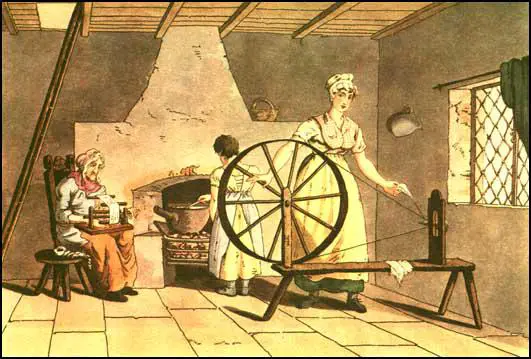Spinning
The spinning of wool, cotton or flax was originally done by the spindle and distaff. The distaff, a stick about 3 ft long, was held under the left arm, and the fibres of wool drawn from it were twisted spirally by the forefinger and thumb of the right hand. As the thread was spun, it was wound on the spindle. The spinning-wheel was invented in Nuremberg in the the 1530s. It consisted of a revolving wheel operated by treadle and a driving spindle. The machine was unchanged until James Hargreaves invented the spinning-jenny in 1764.

Primary Sources
(1) Daniel Defoe, A Tour Through the Whole Island of Great Britain (1724)
Generally speaking, the spinning work is performed by the poor people who live in villages and scattered houses. The clothiers, who generally live in the towns, send out the wool weekly to the spinners. At the same time, the clothiers' servants and horses bring back the yarn that they the spinners have spun and finished.
(2) Edward Baines, The History of the Cotton Manufacture (1835)
The spinner took the short fleecy rolls in which the cotton was stripped off the handcards, applied them successfully to the spindle, and, whilst with one hand she turned the wheel, and thus made the spindle revolve, with the other she drew out the cardings, which, receiving a slight twist from the spindle so as to form cops. In the second process, the roving was spun into yarn: the operation was similar, but the thread was drawn out finer, and received much more twist.
